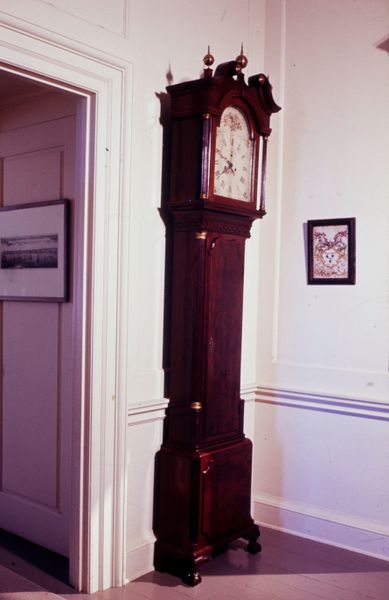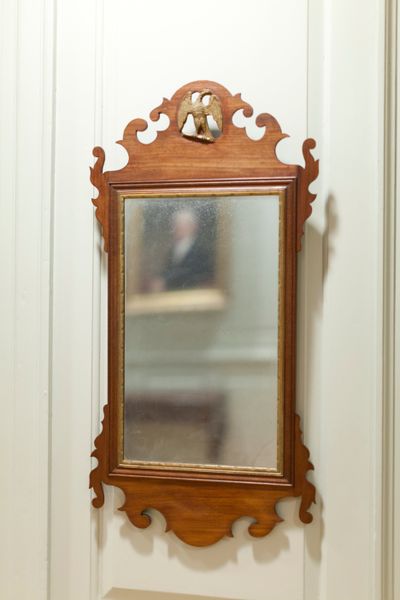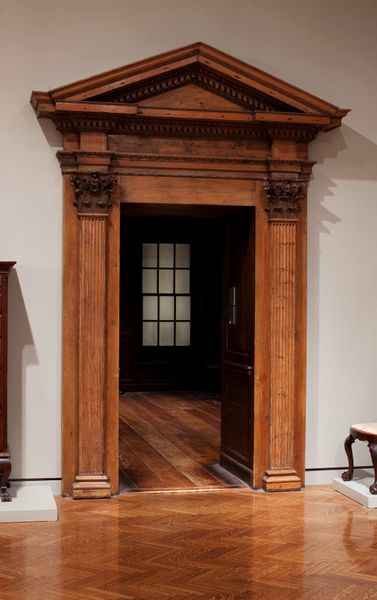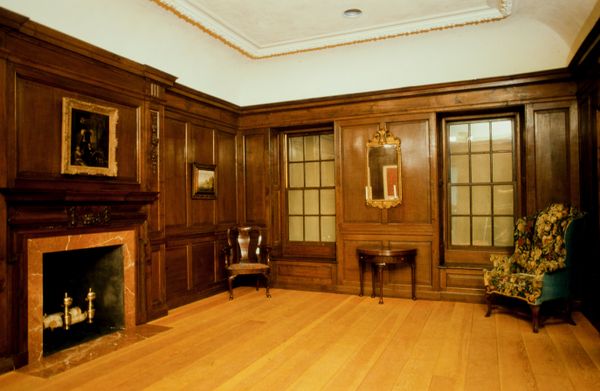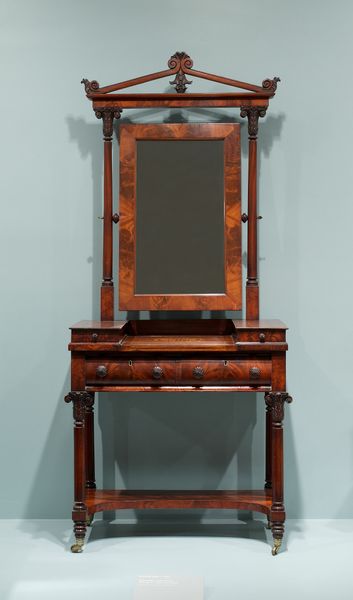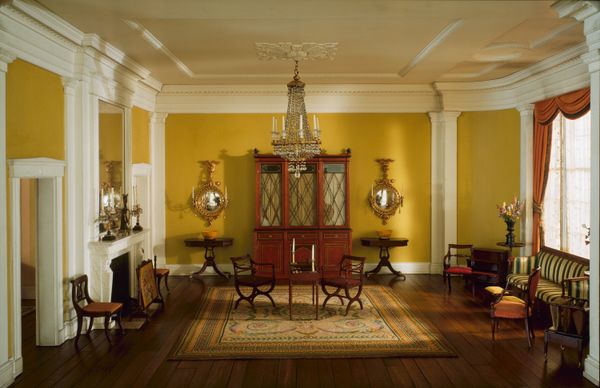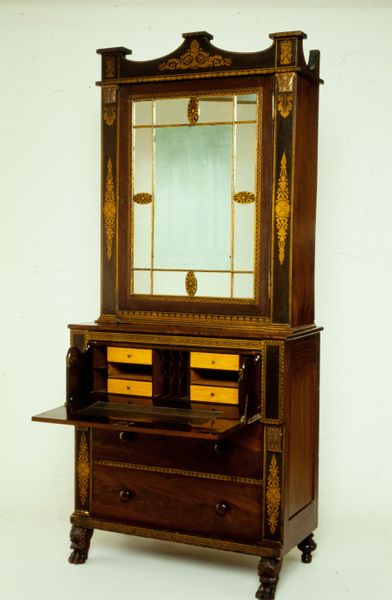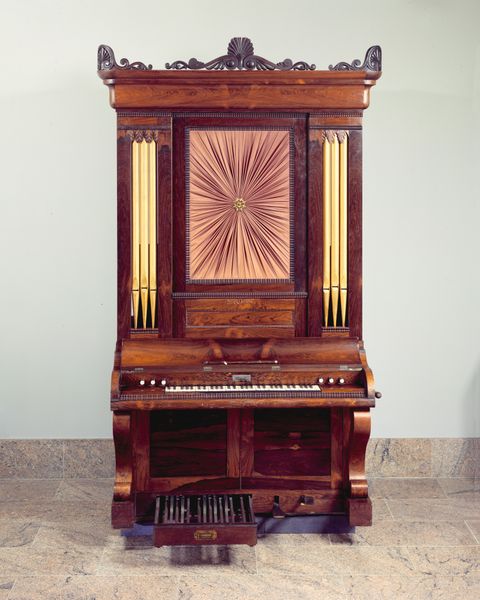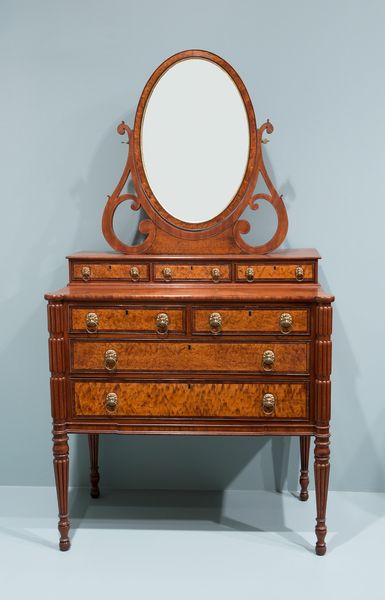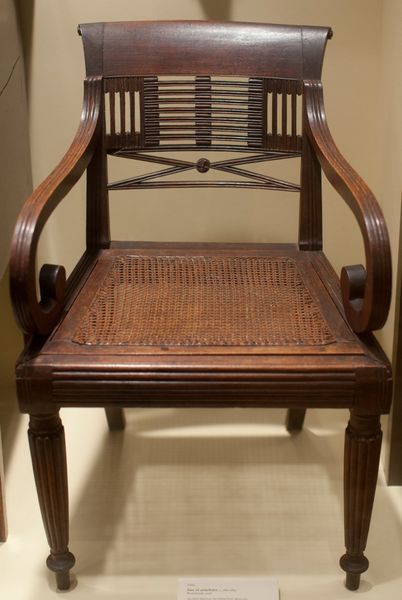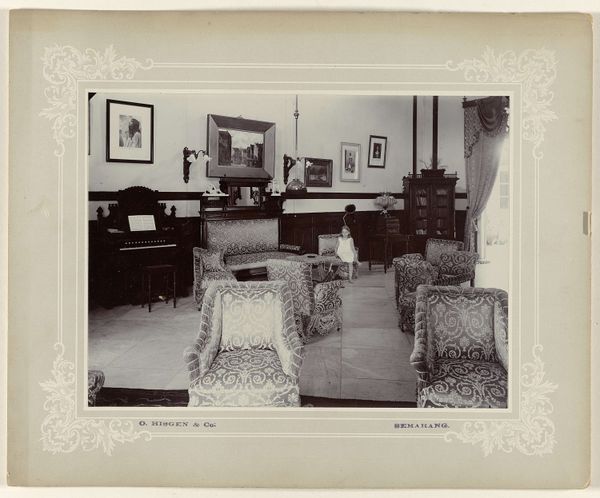
carving, wood
#
neoclacissism
#
carving
#
classicism
#
wood
#
genre-painting
#
interior photography
Dimensions: 28 1/2 x 67 1/2 x 39 3/4 in. (72.39 x 171.45 x 100.97 cm)
Copyright: Public Domain
Editor: Here we have an elegant Sideboard, dating from around 1790 to 1800. It's an anonymous piece, made of carved wood, and the curators here at the Minneapolis Institute of Art have it filed under Neoclassicism. It strikes me as quite stately, but almost severe in its symmetry. What do you see in this piece? Curator: I see a complex dialogue between power and domesticity. While seemingly a simple piece of furniture, the sideboard speaks volumes about class, gender, and the construction of social spaces during the late 18th century. Note the clean lines and classical motifs – these are visual signifiers of power and status adopted from ancient Greece and Rome. Who benefitted from this display? Editor: So, you're saying it’s not just a pretty piece of furniture? Curator: Absolutely not. Consider the labor involved in acquiring the wood, carving the piece, and maintaining its polish. This labour would have been hidden, erased from view so as to project the ideals of upper-class femininity, whiteness, and domesticity. Can we ignore that context and just focus on its aesthetics? What are the ethics of display, here? Editor: That’s a good question. I hadn't really considered the sort of politics behind it. Curator: Consider that seemingly simple bowl placed atop the sideboard – most likely of Asian origin. It’s subtly signalling global trade routes of that time and the violent colonial structures that allowed such exchange to occur, bringing exploitation and dispossession of lands and people. It's also hinting at the wealth and taste of the owners. The objects we live with are not neutral; they are encoded with social meanings. Editor: Wow. I’m never going to look at furniture the same way again! I learned a lot about seeing furniture through an ethical, political lens. Curator: And I hope to remember the names of all who participated in the piece's long life as a tool, an idea, and an aesthetic form. Thank you for that prompt to keep considering.
Comments
No comments
Be the first to comment and join the conversation on the ultimate creative platform.
